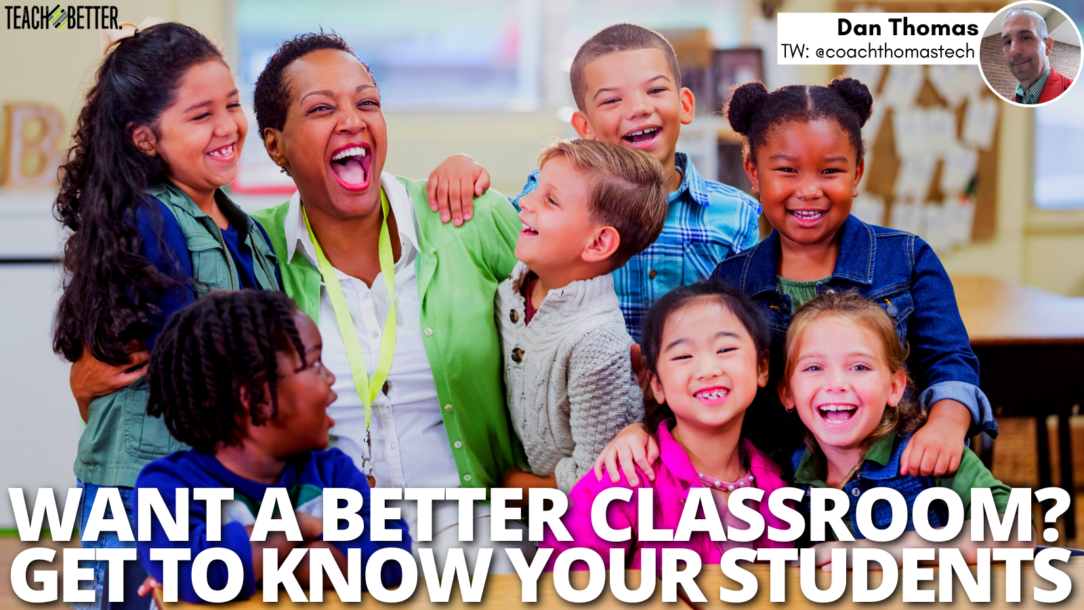TL;DR:
- Educators face growing challenges engaging a generation with abundant distractions and information. Building meaningful connections with students is essential for their success.
- Strategies for connecting with students include greeting them warmly, establishing classroom expectations, looking for shared interests, incorporating playfulness, communicating with parents, and attending extracurricular events.
- Prioritize kindness, respect, and building connections over strict curriculum adherence to foster positive educational experiences.
Get to Know Your Students
Our roles as educators are becoming increasingly challenging. We work with a generation that has instant access to a world of distractions and information. We invest a substantial amount of time with these students, but sometimes, we overlook the fact that they are, indeed, just kids. So, how can we effectively engage them in the learning process?
The considerable time we spend directly interacting with our students fosters an atmosphere of familiarity and friendship. This is, without a doubt, a positive aspect of education. Building connections with our students is not only beneficial but essential. Learning and genuine care go hand in hand; students need to know that we care about them. Drawing from my 30+ years of classroom experience, especially in light of the challenges posed by COVID, it has become evident that connections play a pivotal role in achieving success.
Matt Joseph, from X-Factor EDU, has cultivated a community centered around these connections. His book, “The Power of Connections,” is a treasure trove of strategies to foster meaningful relationships with both students and staff. It all starts with knowing your students as individuals. Learn their names and pronounce them correctly. Treat them with respect and dignity, remembering that we are here to serve them; they are our clients.
Here are a few strategies to help you get to know your students.
Greet Them
A simple “Hello,” “Good Morning,” or “Goodbye” can mean the world to a student. It sets a positive tone for the day or the class and demonstrates a genuine interest in them.
Creating a positive classroom environment is essential for student success. Develop expectations that align with your school's vision and policies. Model behavior that promotes a safe and constructive environment. Click To TweetEstablish Classroom Expectations
Creating a positive classroom environment is essential for student success. Develop expectations that align with your school’s vision and policies. Model behavior that promotes a safe and constructive environment. Even though students might not always express it, they crave and need accountability.
Look for Opportunities to Connect
Make observations outside of the school curriculum. Compliment a new shirt or shoes. Let them know you missed them when they were absent. Pay attention to details like stickers on their laptop, team jerseys, or their music preferences. You never know when you might discover a shared interest.
[scroll down to keep reading]Incorporate Playfulness
Regardless of their age, students are, at heart, children. Play can be a powerful tool, often underestimated as we grow older. Include moments of play in your lessons. Get students up and moving, understanding that sitting for hours can be challenging. Share a joke, bring out LEGO bricks, build a tower, or explore engaging activities like Pop See Ko.
Communicate with Parents
Never underestimate the impact of reaching out to parents, especially for positive reasons. This simple gesture can yield significant benefits in the classroom. Sometimes, small actions mean more than we can imagine.
Attend Extracurricular Events
As a former coach, I cherished the interactions and connections formed during the seasons. In such environments, both you and the students can be yourselves. Dedicate your time to attending these events, providing additional conversation topics for the classroom or school the following day.
Above all, be kind and treat everyone with respect and courtesy. Manners such as “please” and “thank you” are invaluable. Remember that building connections should always take precedence over strict adherence to the curriculum. Get to know your students; you might be pleasantly surprised by the outcomes.
About Dan Thomas
Dan Thomas is an experienced technology education teacher with a passion for educational technology and project-based learning. With over 30 years of experience in the field, Dan has witnessed the evolution of technology in the classroom and has adapted his teaching style to keep up with the latest trends. Dan has worked with students of all ages and backgrounds. He has a strong understanding of how to integrate technology into the curriculum to enhance learning and engage students through project-based learning. His focus is on creating learning experiences that are hands-on, collaborative, and relevant to the real world.




